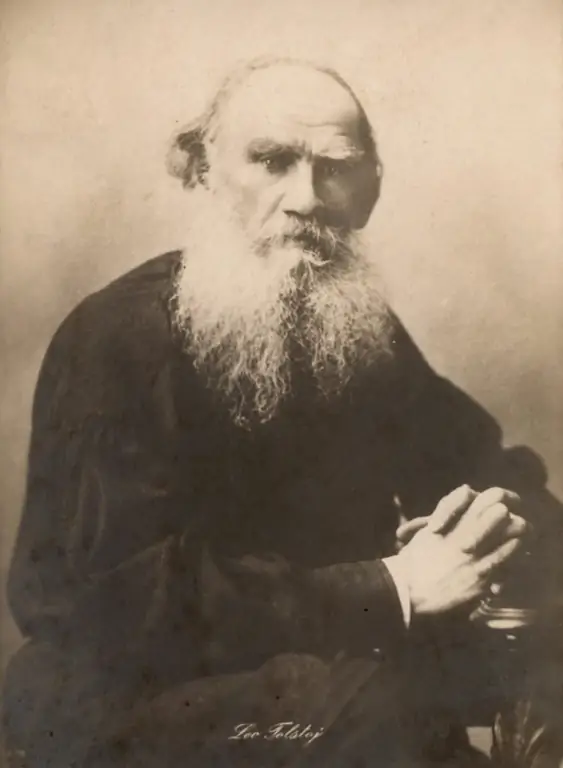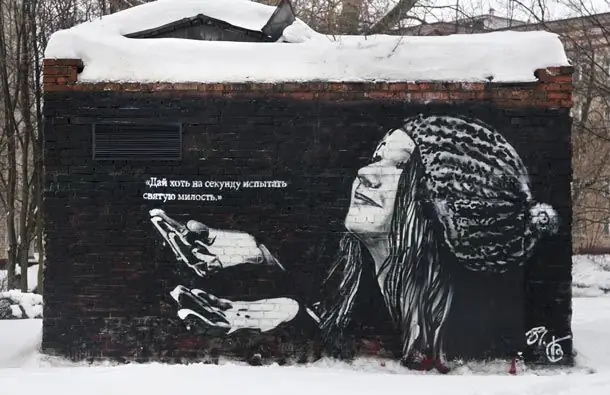2025 Author: Leah Sherlock | [email protected]. Last modified: 2025-06-01 06:56:42
Jacques-Louis David (1748-1825) is a representative of neoclassicism in French painting. After the baroque period and the even more refined and frivolous rococo, the new word was the return to ancient simplicity in the 18th century. David became the brightest representative of the new school.
A few words about the artistic style of the painter
Starting to work under the influence of F. Boucher and paying his debt to the prettiness of Rococo, the young artist visited Rome and returned from it, full of new impressions and ideas. He turned his gaze to the morality and heroism of ancient history, to the laconism of the image. In Rome, he wrote the "Oath of the Horatii" in 1784. This work has become a model for most artists who feel the call of the times. He was enthusiastically received in Rome and Paris. It was then that the features of the technique that he would use for a long time were formed:
- Figures and objects stand out in the foreground.
- The background is meant to set them off. Strict dark or dull tones are used.
- The composition is extremely concise.
- Details are clear, given in large strokes. This distinguishes them from the airiness of rococo.
Bloody French Revolution
Economic and political reasons led to the storming of the Bastillein 1789, the trial of the king in 1792-1793, after the establishment of the National Convention. But the execution of the king did not lead to prosperity for the population. It was starving. There was no unity in the Convention itself. The noblewoman, Girondist Charlotte Corday was shocked by the execution of the king and arrived in Paris, believing that France was in the hands of people who caused harm to everyone. She came to Paris and bought a kitchen knife at the Palais Royal. Three times, under the pretext that she wanted to warn about the impending plot, she tried to get into Marat.

In the end, Marat, who had eczema and suffered from unbearable itching, took her in the bathroom, where he always worked in recent months. The bottom of the tub, where he sat, was covered with sheets that sometimes covered his shoulders. There was a board on the bathtub that served as a table for him. Severe headaches were soothed by vinegar compresses (data from the French source "Marat's Bath"). After a brief conversation, Corday stabbed the hated sans-culotte under the collarbone with a knife. She was taken at the scene of the crime. She didn't answer in court. She was executed. And Marat, nicknamed "Friend of the People", became a cult figure. On the altars of the churches stood his busts, draped with the banners of the revolution.
David's Preliminary Work
As soon as the artist found out about the murder, he immediately rushed to Cordillera Street, where Marat lived. The painter immediately made drawings, which he later helped write "The Death of Marat". The picture almost immediately formed into a single whole in the artist's head. By candlelight, the painter quickly sketched.

He was greatly shocked by the death of Marat. The painting was not even commissioned by anyone. The artist painted for himself. The order will come the next day, as well as the request to arrange a funeral. An ardent revolutionary, David saw the slain hero-martyr. This is what he tried to reveal in the funeral ceremony and accordingly write "The Death of Marat". The picture was supposed to become a symbol of devotion to the idea and sacrifice. During the funeral of Marat, his embalmed body was wrapped, as was done with Roman soldiers, in white sheets. This is how the funeral took place. "The Death of Marat", a picture whose history has already been written as a whole, since David has done all the preparatory work, invites the viewer to think about memory and morality. The painting itself was created by the painter within three months.
"The Death of Marat": a description of the painting
“Each of us is responsible to the motherland for the talent that he has. A true patriot should serve her willingly, educating fellow citizens by all means and calling them to sublime deeds and virtue” - this is David’s saying.

From this angle, he portrayed the death of Marat. The picture is concise. The artist did not begin to paint the painful condition of the skin of a fiery revolutionary. The composition is simple and bold. It resembles the body of Christ in Michelangelo's Pieta or Caravaggio's Burial. And his wound brings to mind the spear that pierced the chest of Jesus. The body of the already dead Marat, with a hand hanging from the bathtub, holds a pen. The second hand is on the board. In herthere is a false letter to Korda, which is stained with blood.

She says in it that she is very unhappy. The last thing the hero himself wrote lies nearby. It says that the money should be given to the mother of 5 children whose father died for freedom. The sign is right next to it. The bath water and sheets are stained with blood. On the floor is a large kitchen knife, also stained with blood. Marat's ugly, broad-cheeked face is ennobled by the silence of death that kissed him. There is something tender and bitter at the same time in this picture. With such feelings David saw the death of Marat. The picture is filled with historically real details, but bears the imprint of the ideal. The inscription on a rough wooden box reads: "MARATU - David." This is such a kind of epitaph.
Color and detail
On the dark background of the wall, a bright body of a revolutionary with a bloody wound and white sheets that fell on the side of the bathtub and white sheets are highlighted with a beam of light.

Shadows are very sharp, so the leaf in the foreground seems to protrude beyond the edge of the canvas. All the details speak of the Spartan, extremely modest lifestyle of the leader of the Jacobins. Under the left hand are sheets of paper showing that Marat has just begun, but has not finished his work. The journalistic pen in his right hand, which is held by Marat, shows that he served the revolution until his last breath. All the details of the canvas show contemporaries that Marat was poor and incorruptible.
The Death of Marat (1793) is in Brussels.
Recommended:
"The poet died" Lermontov's verse "The death of a poet". To whom did Lermontov dedicate "The Death of a Poet"?

When in 1837, having learned about the fatal duel, mortal wound, and then the death of Pushkin, Lermontov wrote the mournful "The poet died …", he himself was already quite famous in literary circles. The creative biography of Mikhail Yurievich begins early, his romantic poems date back to 1828-1829
Films with Basharov: a list of the best. Marat Basharov - filmography

Marat Alimzhanovich Basharov is a Russian theater and film actor, TV presenter. Honored Artist of Tatarstan (2012). Laureate of the State Prize of the Russian Federation (2001). He began acting not so long ago, in 1998, having first appeared on the big screens in the film The Barber of Siberia, where he played a friend and rival of the protagonist, Junker Polievsky
The life and death of Leo Tolstoy: a brief biography, books, interesting and unusual facts about the life of the writer, date, place and cause of death

The death of Leo Tolstoy shocked the whole world. The 82-year-old writer died not in his own house, but in the house of a railway employee, at the Astapovo station, 500 km from Yasnaya Polyana. Despite his advanced age, in the last days of his life he was determined and, as always, was in search of the truth
Pasha 183: cause of death, date and place. Pavel Aleksandrovich Pukhov - biography, creativity, personal life, interesting facts and mysterious death

Moscow is the city where street art artist Pasha 183 was born, lived and died, called "Russian Banksy" by The Guardian newspaper. After his death, Banksy himself dedicated one of his works to him - he depicted a burning flame over a can of paint. The title of the article is comprehensive, so in the material we will get acquainted in detail with the biography, works and cause of death of Pasha 183
"Death of Sardanapalus" - an image of pagan death

In bliss and luxury, the legendary king of Assyria and Nineveh, Sardanapal, led an ugly life in his debauchery. This took place in the seventh century BC. The Medes, an ancient Indo-European people, besieged its capital for two years. Seeing that he could no longer withstand the siege and perish, the king decided that the enemies should not get anything. How does he want to do it? Very simple. He himself will take the poison, and everything else is ordered to be burned

